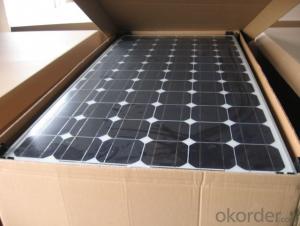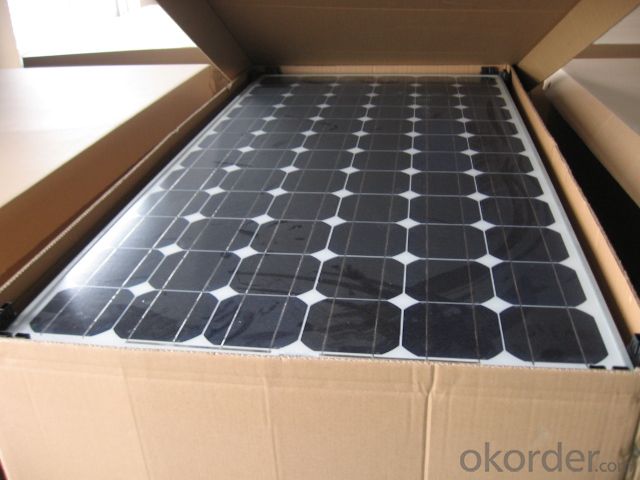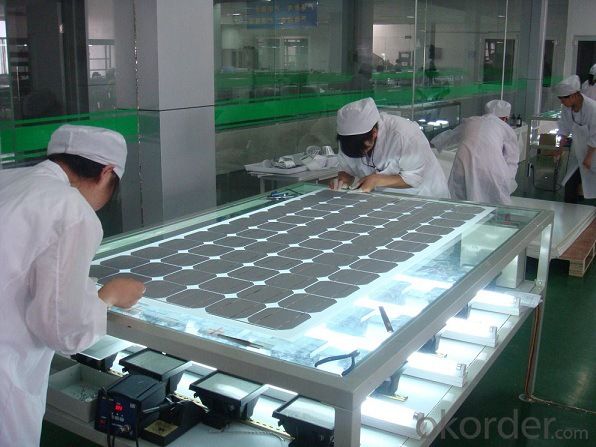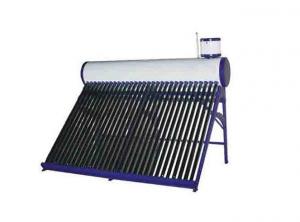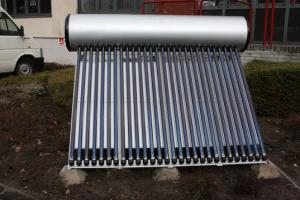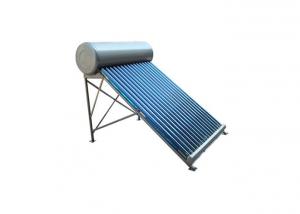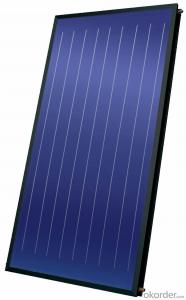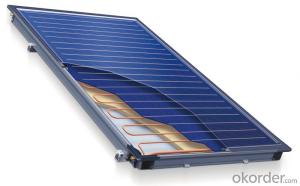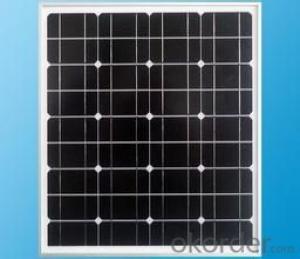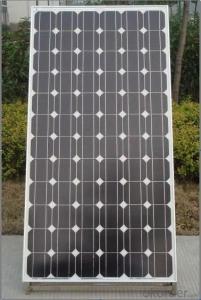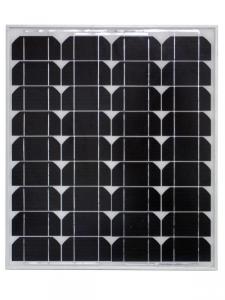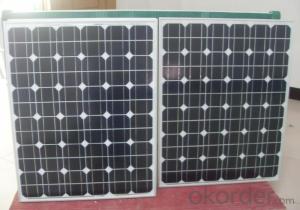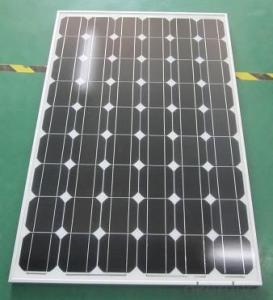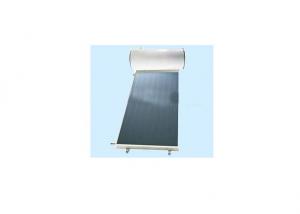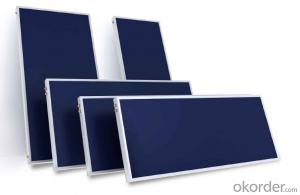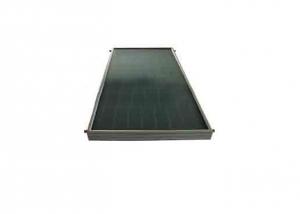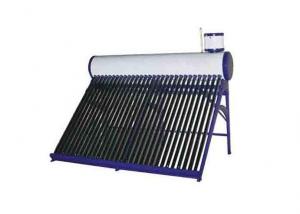Export Quality Flat Panel Solar Collectors - Solar Monocrystalline Series Panels
- Loading Port:
- Tianjin
- Payment Terms:
- TT OR LC
- Min Order Qty:
- 1 pallet
- Supply Capability:
- 100000000 pallet/month
OKorder Service Pledge
OKorder Financial Service
You Might Also Like
Solar Monocrystalline Series Panels
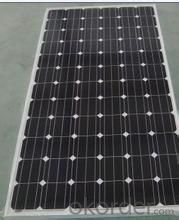
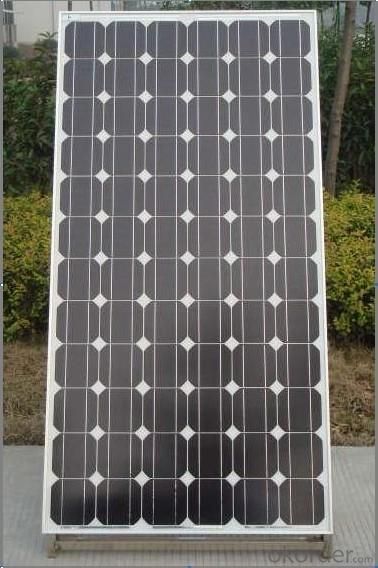
Product Description:
Introduction of Solar Monocrystalline Series Panels
CNBM Solar photovoltaic (PV) Panel is designed for large electrical power requirements. It is the optimal choice for both on-grid and off-grid power systems. CNBM Solar panel offers high performance of power per square foot of solar array. Monocrystalline silicon(c-Si): often made using the Czochralski process. Single-crystal wafer cells tend to be expensive, and because they are cut from cylindrical ingots, do not completely cover a square solar cell module without a substantial waste of refined silicon. Hence most c-Si panels have uncovered gaps at the four corners of the cells.
Characteristics of Solar Monocrystalline Series Panels
I Solar Cell : High efficiency crystalline solar cell. Even if under the weak light, the solar module can produce maximum power output.
II Tempered glass (toughened glass): Anti-reflecting coating and high transmission rate glass increase the power output and mechanical strength of solar module.
III EVA and TPT: Using high quality EVA and TPT to prevent destroying and water.
IV AI frame: Without screw, corner connection. 6 holes on the frame can be installed easily.
V Junction box: Multi function junction box with water proof.
VI Long lifetime: ≥25 years; Less power decrease
VII Good performance of preventing from atrocious weather such as wind and hails.
VIII Resisting moisture and etching effectively, not effected by geology.
Standard Test Conditions of Solar Monocrystalline Series Panels
The opto-electrical specifications shown below are stabilized values being measured at Standard Test Conditions, Irradiance: 1000W/m2, Spectrum: AM1.5 at 25°C, The info below is subject to manufacturing tolerances. Where appropriate minutes of measurement are available and are used for the dimensioning of the installation.
Advantages of Solar Monocrystalline Series Panels
• CNBM Solar performance guarantees for 25 years
• 12 years guarantee for workmanship
• Timeliness of delivery
CNBM International Corporation's products including Monocrystalline Solar Panel, Polycrystalline Solar Panel have received and enjoyed famous reputation in many countries and regions in the world .As a solar panel supplier in China, we strive to provide our customers with excellent service, superior products and unmatched value.
Characteristics of Solar Monocrystalline Series Panels
Max Power Voltage Vmp (V) | 18.4V | 17.6V |
Max Power Current Imp (A) | 6.52A | 7.39A |
Open Circuit Voltage Voc (V) | 23.0V | 22.2V |
Short Circuit Current Isc (A) | 6.97A | 7.90A |
Max Power Pm (W) | 120W | 130W |
Temperature Coefficient of Cells
NOCT | 47℃±2℃ |
Temperature Coefficients of Isc (%/℃) | 0.064 |
Temperature Coefficients of Voc (%/℃) | -0.33 |
Temperature Coefficients of Pmp (%/℃) | -0.45 |
Mechanical Data Solar Monocrystalline Series
Power | 120W/130W |
Dimension | 1190/1470×670×30mm |
Weight | 9.5kg/11.7kg |
Tolerance | ±3% |
The dimension of the modules can be changed according to the demand of clients
Limits
Operating Temperature | –40 °C to +85°C |
Storage Temperature | –40 °C to +85°C |
Max System Voltage | 700V |
Guarantee Solar Monocrystalline Series Panels
Products Guarantee | 10 yrs free from defects in materials and workmanship |
Performance Guarantee | No less than 90% within 10yrs and no less than 80% within 25yrs |
Certificates | IEC, ISO, TUV, CE |

FAQ
We have organized several common questions for our clients,may help you sincerely:
1. What’s price per watt?
A: It’s depends on the quantity, delivery date and payment terms of the order. We can talk further about the detail price issue. Our products is high quality with lower price level.
2. Can you tell me the parameter of your solar panels?
We have different series of cells with different power output, both from c-si to a-si. Please take our specification sheet for your reference.
3. How do you pack your products?
We have rich experience on how to pack the panels to make sure the safety on shipment when it arrives at the destination.
4. Can you do OEM for us?
Yes, we can.
5. How long can we receive the product after purchase?
In the purchase of product within three working days, We will arrange the factory delivery as soon as possible. The perfect time of receiving is related to the state and position of customers. Commonly 7 to 10 working days can be served.
- Q: Are solar collectors affected by hail or other severe weather conditions?
- Yes, solar collectors can be affected by hail or other severe weather conditions. Hail can cause physical damage to the collectors, such as cracks or dents on the surface, which can impair their performance. Other severe weather conditions like strong winds or heavy snowfall can also potentially damage or dislodge the collectors. However, proper design, installation, and use of protective measures can minimize the impact of these weather conditions on solar collectors.
- Q: What is the energy payback time for a solar collector?
- The energy payback time for a solar collector is the period it takes for the collector to generate the same amount of energy that was used in its production and installation.
- Q: Can solar collectors be used in areas with limited access to regulatory frameworks?
- Yes, solar collectors can be used in areas with limited access to regulatory frameworks. Solar collectors are a versatile technology that can be deployed in various settings, including off-grid locations or areas with limited infrastructure. They can provide clean and renewable energy independently of regulatory frameworks, allowing for increased energy access and sustainability in these areas. However, it is important to ensure proper installation, maintenance, and safety measures are in place to maximize efficiency and minimize potential risks.
- Q: Can solar collectors be used for heating monasteries?
- Yes, solar collectors can indeed be used for heating monasteries. Solar collectors, such as solar thermal panels, can harness the sun's energy to heat water or air, which can then be used for space heating in monasteries. This renewable energy source can help reduce the reliance on fossil fuels and lower carbon emissions, making it a sustainable and cost-effective heating solution for monasteries.
- Q: Can solar collectors be used to generate electricity for electric vehicle charging stations?
- Yes, solar collectors can be used to generate electricity for electric vehicle charging stations. Solar panels can convert sunlight into electricity, which can then be used to charge electric vehicles. This renewable energy source is a sustainable and environmentally friendly option for powering electric vehicle charging stations.
- Q: Can solar collectors be used for generating electricity during cloudy days?
- Yes, solar collectors can still generate electricity during cloudy days, although the efficiency and power output may be reduced compared to clear sunny days.
- Q: Are solar collectors eligible for government incentives?
- Yes, solar collectors are eligible for government incentives.
- Q: How do solar collectors impact biodiversity?
- Solar collectors, such as solar panels or solar thermal systems, have a relatively low impact on biodiversity compared to other forms of energy generation. While it is true that the installation of solar collectors may disrupt the local ecosystem temporarily, the long-term benefits they provide to the environment outweigh these short-term disturbances. One of the major advantages of solar collectors is that they produce clean and renewable energy, reducing the reliance on fossil fuels that contribute to air pollution and climate change. By replacing traditional energy sources, solar collectors help mitigate the release of greenhouse gases, thus benefiting biodiversity in the long run. Additionally, solar collectors have a minimal footprint and can be installed on various locations like rooftops, deserts, or brownfields, without requiring large areas of land. This means that they can coexist with existing habitats, rather than causing deforestation or destruction of natural habitats. Moreover, solar collectors do not produce any noise, air, or water pollution during their operation, which limits their negative impact on local fauna and flora. The absence of harmful emissions, such as sulfur dioxide or nitrogen oxide, contributes to the overall improvement of air quality, benefiting both humans and wildlife. It is worth noting that solar collectors can also provide additional positive impacts on biodiversity. For example, solar farms can be designed to create suitable habitats for certain species, such as pollinators or birds, by incorporating native plants or providing nesting opportunities. This can help promote biodiversity and restore ecosystems in areas where they are installed. In conclusion, while there may be some short-term disruptions during installation, solar collectors have a minimal impact on biodiversity compared to other energy generation methods. The long-term benefits they provide, such as reduced greenhouse gas emissions and improved air quality, outweigh any temporary disturbances they may cause. Additionally, solar collectors can even contribute to the enhancement of local biodiversity by creating suitable habitats for certain species.
- Q: How do evacuated tube solar collectors work?
- Evacuated tube solar collectors work by utilizing a vacuum-sealed glass tube design to harness the sun's energy. These tubes consist of two concentric glass layers, with the outer layer being transparent and the inner layer being coated with a selective absorber material. When sunlight enters the tube, it is absorbed by the selective absorber, converting the solar energy into heat. The vacuum insulation minimizes heat loss, allowing the absorbed heat to be transferred to a fluid (usually water or a heat transfer fluid) flowing through a metal tube within the inner glass layer. This heated fluid can then be utilized for various applications such as heating water or space, or even generating electricity through a heat exchanger or a power turbine.
- Q: Can solar collectors be used in areas with limited access to market opportunities?
- Yes, solar collectors can be used in areas with limited access to market opportunities. Solar energy is a versatile and decentralized form of power generation, which makes it suitable for remote and underdeveloped regions. By harnessing the abundant sunlight, solar collectors can provide a reliable and sustainable source of electricity, reducing dependency on traditional grid systems. This can create opportunities for economic growth, as communities can use solar energy for various applications such as powering homes, schools, clinics, and small businesses. Additionally, solar technology advancements and decreasing costs have made it more accessible for regions with limited market opportunities, enabling them to benefit from clean and affordable energy solutions.
Send your message to us
Export Quality Flat Panel Solar Collectors - Solar Monocrystalline Series Panels
- Loading Port:
- Tianjin
- Payment Terms:
- TT OR LC
- Min Order Qty:
- 1 pallet
- Supply Capability:
- 100000000 pallet/month
OKorder Service Pledge
OKorder Financial Service
Similar products
Hot products
Hot Searches
Related keywords
